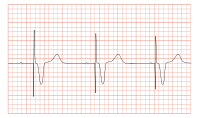 Data visualization is about finding and communicating patterns. But here is an often-forgotten truism: patterns are not some kind of ready-to-wear knowledge. You can look at a chart and have an epiphany and the person next to you can dismiss it as useless. Let’s see why.
Data visualization is about finding and communicating patterns. But here is an often-forgotten truism: patterns are not some kind of ready-to-wear knowledge. You can look at a chart and have an epiphany and the person next to you can dismiss it as useless. Let’s see why.
Is this person a friend of yours? If you are a photographer, what do you think about this photo? If you’re a doctor, what can you tell us about this man’s health? If you are a marketer, do you think he’ll buy your product?
Now, let me ask you this: if you know nothing about photography, can you tell us if this is a good photo? That’s harder, isn’t it? You can tell us how it makes you feel, but that’s not enough.
We all are experts at something. And being an expert is just a different way of saying that we are better than most people at spotting patterns and taking them into account in a research or a decision-making process. The more complex patterns you can identify, the more knowledgeable you are. To some extend, knowledge-building equals pattern-and-context-discovery.

I see a pattern in this ECG, but I’m not a doctor. This person could be dying, and I can’t see it. A meaning may be obvious for you, but not for me. Help me. Forget silly decorations. Add context patterns and I’ll make the connections and we can have an epiphany together.
Epiphany. That’s the name of the game in data visualization, not “wow”. Remember that.
(OK, “wow, an epiphany” is also acceptable…)
You’re on fire at the moment Jorge, another great post
Thanks Andy. It must be a Christmas spirit.
I don’t know if people realize how relevant this is. This poses hard questions to the whole discipline. We had interesting discussions in the past regarding the use of students in place f domain experts in evaluation. There is a lot to speculate about that.
Hey Jorge, I’m not really sure what you’re referring to with “context pattern”. Found a couple of hints but only related to programming and nothing about dataviz.
Could you give an example?